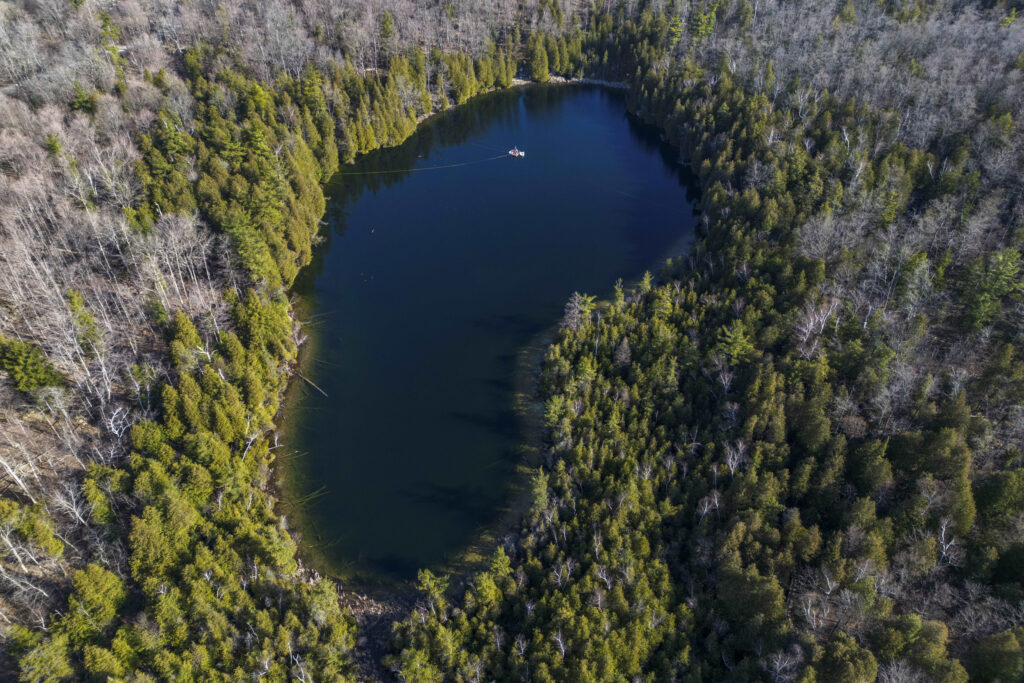Canadians always enjoy a Canadian angle on any story. A perennial classic is the lowly buck-toothed beaver. So here’s one with a climate angle, and it’s even complete with victimization of aboriginals, courtesy of Inside Climate News. Alas, it’s in Alaska, not Canada. But it’s an unusually creative entry in the climate silliness sweepstakes which says climate breakdown might turn Alaska into a farming powerhouse… so perhaps pesky Castores canadenses will sink their rabbit-like buck teeth into Elmer Fudd’s carrots. And why not, since the whole beavers of climate death thing is cartoonish.
According to ICN,
“Over the last several decades, people in remote Alaska communities have observed an influx of beavers as the warming climate has fostered the growth and expansion of woody vegetation, providing more forage and dam construction materials for the eager engineers. Recent studies have highlighted a vicious circle of expanding Arctic beaver populations and global warming. As climate change creates new habitats for beavers in the High North, their dams can cause more permafrost to thaw, releasing huge stores of greenhouse gases to further warm the atmosphere.”
It’s a bit odd that ICN speaks of “an influx of beavers as the warming climate has fostered” greening. But surely it’s CO2, not warming, that has done it, since the world has seen greening in China and India, where it is hard to believe that more heat means more woody vegetation. It’s also odd to read that Alaskans, including aboriginals living in harmony with nature, regard beavers not as favoured children of Gaia but as relentlessly chomping menaces: “Today the rodents and the waterworks they construct are a source of angst for Indigenous people and an increasing focus of Arctic science. ‘The environmental changes caused by beavers are not always easy for people to live with,’ according to a study prepared by the University of Alaska Fairbanks for the Selawik National Wildlife Refuge.”
It’s not odd that they found some American government employee to call the whole thing a fast-motion disaster: “The dizzying acceleration of warming in the Arctic has transformed the region into a warmer, wetter and more diverse environment, she said. The beaver migration has become part of that intricate transition and foreshadows the Arctic becoming a much different place by the end of the century.” Although we are a bit dizzy at the notion of dizzying acceleration of warming in the Arctic given the actual temperature records presented in our “Sunburnt lands” tour.
Also never mind that before humans came and made them all into hats, or just got rid of them because their dams caused us angst, there were umptysquillion of the little flat-tailed menaces roaming North America (seriously, estimates vary from 60 to 400 million, the science being settled) thawing the permafrost with their protruding teeth and soggy dams and setting the planet on fire. It just didn’t find out until now. Just as coral didn’t know to go extinct in the previous “Eemian” interglacial that was substantially warmer than our own, nor did polar bears or everything else that will apparently die and increase global warming in the process if it gets another .8°C warmer or something.
As noted at the outset, someone else tried to make a fake disaster into real good news, suggesting that Alaska might become a breadbasket of some sort by 2100. That someone was writing in The Conversation, which has almost become self-parody on climate. But in a revealing way.
Thus we’re told “Gardeners in Alaska know that it’s hard to grow big, juicy tomatoes here. But as the climate rapidly warms in the far north, that could change.” Or not. And the piece doesn’t warn that the beavers might eat them. (No, really, because “During summer, beavers will eat grasses, herbs, leaves of woody plants, fruits, and aquatic plants” and proverbially knowledge consists of realizing a tomato is a fruit while wisdom consists of not adding it to fruit salad.) But it does claim that “Arctic sea ice is rapidly receding, and average annual temperatures are 3-4 F higher statewide (1.7-2.2 C) compared with those in the mid-20th century.”
Even so it allows that turning Alaska into Iowa is a stretch: “With cool summers, short growing seasons and frigid winters, most farming in Alaska has long been limited by the state’s cold climate. Although home gardens are popular, with growers favoring hardy crops such as cabbages, potatoes and carrots, agriculture is a tiny industry.” How tiny? “Recent data from the U.S. Department of Agriculture tallies a mere 541 acres of potatoes, 1,018 acres of vegetables and 22 acres of orchards in our 393 million-acre state.”
If you’re wondering where they even found 22 suitable acres for an orchard, we’re guessing the panhandle. But the article is thinking big. Indeed it goes on to hallucinate that “by the year 2100, my grandchildren might anticipate 2,700 growing degree days each year above a 50 F threshold – more than enough to harvest sorghum, soybeans, cucumbers, sweet corn and tomatoes.” And then it calls for government subsidies, recalling Adam Smith’s crack about protectionists.
Also, we hate to be spoilsports. But when you get one of those sad stories about a local Groundhog Day groundhog not making it to Groundhog Day, it doesn’t appear that the date at which inane rodents predict the end of winter has changed even slightly despite climate breakdown. Just as, say, a website inviting you to experience winter in Norway stresses that it’s very cold and snowy and you better dress for it or you will not have a happy visit. And Alaska is neither beaver food nor a cornfield, and it isn’t going to be either.


